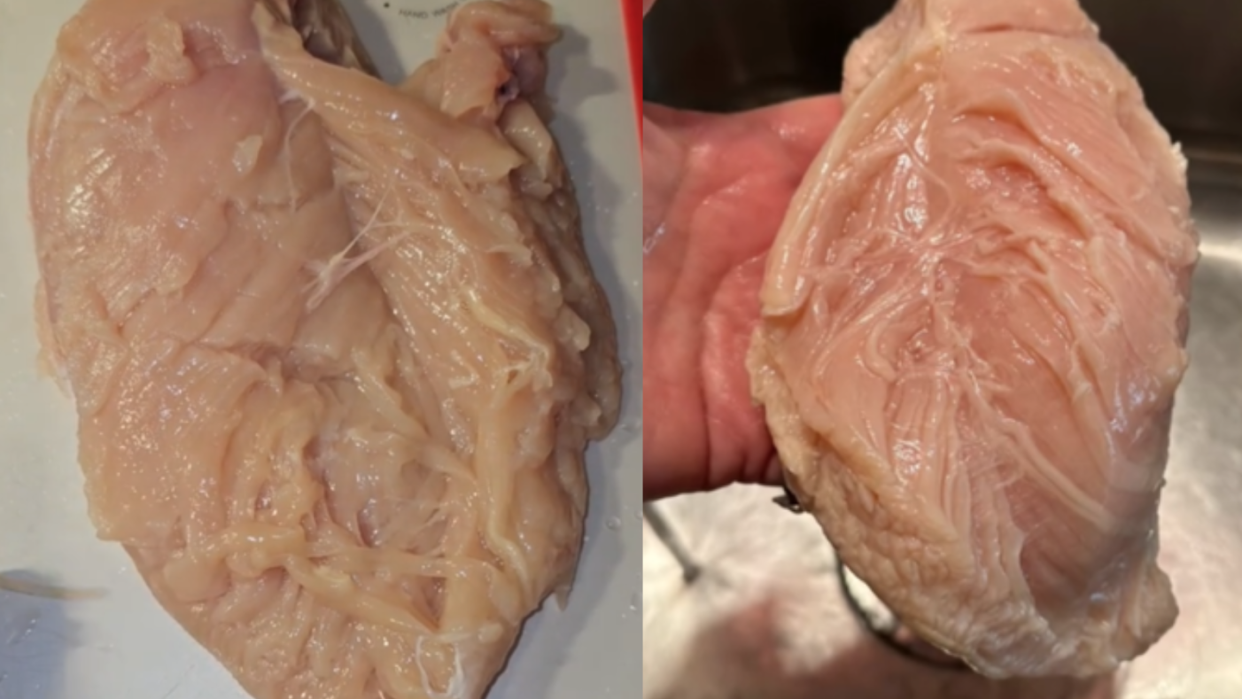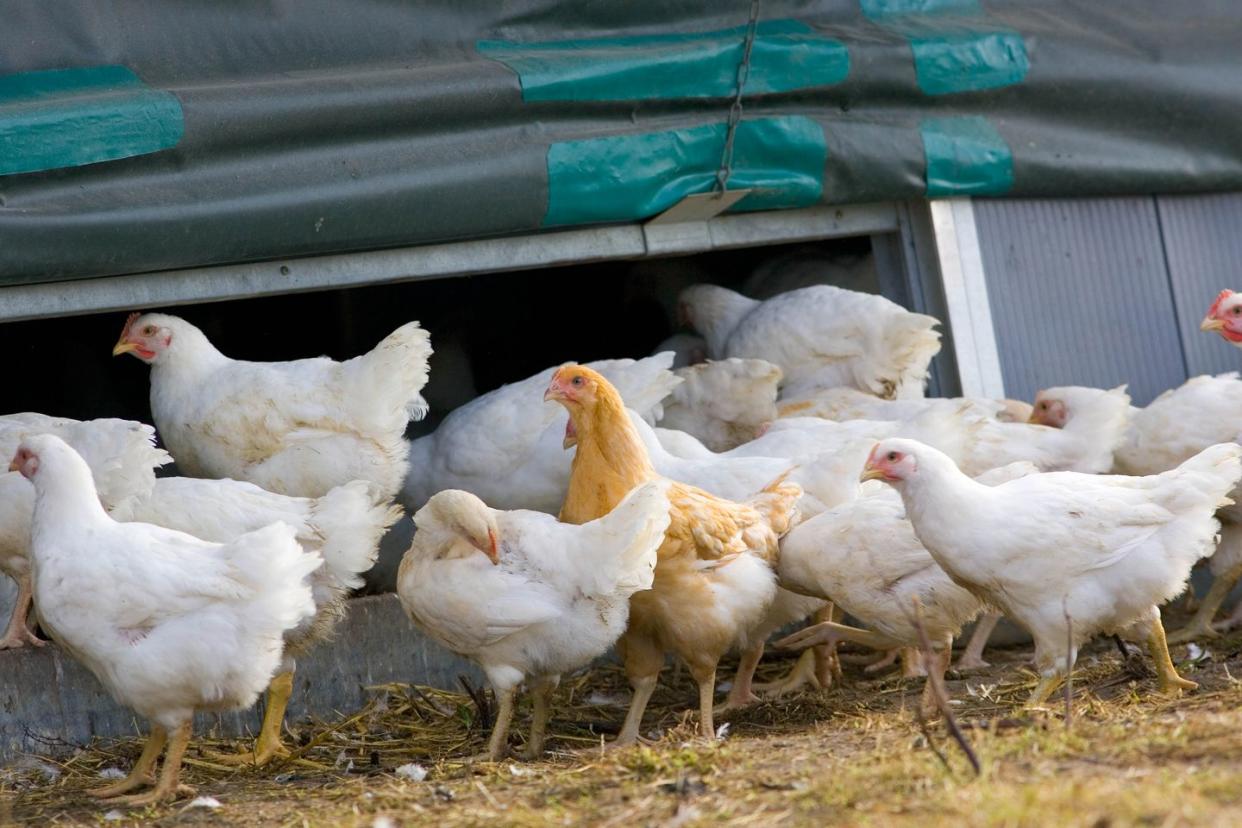There's A Scientific Reason Why Your Raw Chicken Is Stringy

"Hearst Magazines and Yahoo may earn commission or revenue on some items through these links."
Cooking chicken can make some home cooks squeamish. The nation’s most popular protein has a few qualities than induce anxiety in the kitchen: slimy texture, occasional blood clots, and the ever-present risk of Salmonella. But as if home cooks didn’t have enough to worry about, a relatively new defect found in commercial chicken is becoming a common occurrence.
People have taken to social media to share a strange textural phenomenon they're finding in chicken breasts. The meat has been seemingly disintegrated into stringy shreds. A few tin foil hat conspiracy theorists accuse their supermarket poultry of being lab-grown or fake. But this stringy defect is very real and it has an official name: spaghetti meat.
Don't get us wrong, we love chicken spaghetti. Spaghetti chicken, on the other hand, is decidedly less delicious. But what exactly is it? Is it safe to eat? We chatted with Dr. David Gerrard, Director of Virginia Tech's School of Animal Science, to demystify spaghetti meat.
What Is Spaghetti Meat Chicken?
Spaghetti meat refers to a muscle defect, also known as a myopathy, that causes chicken meat to unravel and split into soft strings. Gerrard says that this myopathy “has been contributed to decreases in connective tissue strength that holds the muscle bundles together.”
The defect was first identified in a 2015 study and was initially known as “mushy breast.” Over time, the abnormality was renamed spaghetti meat because of its similarity to pasta noodles.
It specifically impacts the muscles in chicken breast but it has been known to occasionally spread to the leg and thigh muscles. While spaghetti meat is primarily observed in commercial chicken, it has also been identified in turkey and pork (albeit in fewer instances).

What Causes Spaghetti Meat Chicken?
Gerrard estimates that the myopathy affects anywhere from 10 to 35 percent of the chickens in the American poultry industry. The occurrence of spaghetti meat is influenced by the bird’s genetics as well as the facilities in which they’re grown and processed. While the correlation is not fully confirmed, many experts in the field associate spaghetti meat with the increased growth rate that happens at the industrial level.
Over the past 75 years, the poultry industry has exponentially bulked up the mass of broiler chickens and the rate in which they mature to increase efficiency and yield. In 1950, chickens took roughly 16 weeks to reach the ideal weight for sale. Now, chickens are ready to be processed in half that time, thanks to selective breeding and specialized diets.
Researchers propose that the muscle fibers of bigger birds are weaker and more susceptible to defects—especially when compounded by other factors like butchering, packaging, and even light exposure. One study describes the processing of these high-yield chickens as “mechanical stresses acting on a weakened scaffold.” However, because the phenomenon is relatively new, more research is still needed to fully understand the defect.
Is Spaghetti Meat Chicken Safe To Eat?
Studies indicate that chicken with the spaghetti meat defect is entirely safe to eat. However, the texture and nutritional profile is negatively impacted. Spaghetti meat chicken has been shown to have less protein and more fat than unaffected poultry. Some studies have also found that affected chickens have a higher rate of "drip loss," meaning more water leaks out of the muscle as it cooks.
“Because of this change in structure, there is a corresponding loss in sensory properties when these filets are cooked,” Gerrard says. To put it plainly, cooked spaghetti meat chicken tastes drier than average and typically has a softer, less pleasant texture. It’s not ideal, but it’s not unsafe to eat.
In many cases, chicken meat with severe cases of the defect is set aside for processed products like sausage and nuggets. But you'll likely find breasts with mild to moderate levels of spaghetti meat packaged for sale in the meat aisle of your local grocery store.
The best bet for avoiding spaghetti meat is by buying chicken from small-scale suppliers that grow their chickens at a slower rate. It's not always easy to identify, but some helpful hints are finding smaller breasts that cost more.
You Might Also Like






